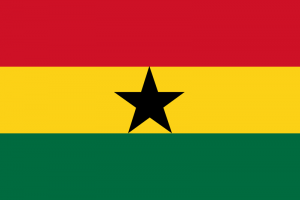Language/Twi/Culture/Traditional-Dance
| ◀️ Traditional Music — Previous Lesson |
Traditional dance is an integral part of Twi culture, and holds great importance in various social and religious ceremonies. Twi dance reflects the rich history and traditions of the ethnic group, and allows individuals to express themselves in a unique way. In this lesson, you will learn about the various styles and movements of traditional Twi dance, and how it has played a significant role in Twi culture.
After mastering this lesson, these related pages might interest you: Using Proverbs in Conversation & Last Names and Lineage.
Meaning and Significance
Traditional Twi dance is more than just movement to music; it is a cultural expression that is passed down from generation to generation. The dance movements are an outlet for individuals to express their feelings, aspirations, and sense of community.
Dance is a key component in many Twi ceremonies, including weddings, funerals, and festivals. These events are an opportunity for individuals to come together as a community and engage in the shared cultural experience of dance. It is not uncommon for Twi dance to incorporate religious elements, such as prayer and offerings, into its movements.
Styles of Traditional Dance
Twi traditional dance can be broadly classified into two categories: ceremonial dance and recreational dance. Ceremonial dances are performed during religious events and social ceremonies, while recreational dances are performed at festivals and other informal gatherings.
- Ceremonial Dance Styles
- Adowa
Adowa is the most popular traditional dance in Ghana, and is widely performed during funerals, festivals, and other social events. Adowa is traditionally performed by women, who wear brightly colored dresses and adorn their heads with scarfs. The dance movements involve slow, graceful steps, and use of arms and feet.
- Kete
Kete is a royal dance that originated from the Asante Kingdom in Ghana. It is typically performed during grand occasions such as the enstoolment of royals, weddings, and other significant events. Kete is commonly performed by both men and women and features intricate footwork and synchronized movements.
- Brɔfo
Brɔfo is a traditional dance style that originated from the Brong Ahafo region in Ghana. It is usually performed by men who form a circle while dancing. The dance movements involve quick and complex footwork, and the dancers use handclaps and shouts to produce rhythm.
- Adzogbo
Adzogbo is a traditional dance style from the Ewe people in Ghana. It is typically performed during funerals and other cultural ceremonies. Adzogbo movements involve intricate footwork and use of the entire body in swift movements.
- Recreational Dance Styles
- Agbadza
Agbadza is a recreational dance style that originated from the Ewe people in Ghana. It is typically performed at social gatherings and is known for its fast-paced movements and use of drums.
- Bambaya
Bambaya is a recreational dance style that originated from the Northern Region of Ghana. It is usually performed by youth and includes energetic movements and use of drums, bells, and whistles.
- Gota
Gota is a traditional dance style from the Northwest Region of Ghana. It is played during festivals and other cultural events, and is known for its complex footwork and use of drums and gongs.
- Damba
Damba is a dance style that originates from the Northern Region of Ghana. It is typically performed during religious events and is known for its smooth and flowing movements.
Movements and Techniques
Traditional Twi dance is characterized by fluid and rhythmic movements that reflect the themes of the dance. Each dance style has its unique movement patterns that are designed to express different emotions and convey cultural themes.
Common movements in Twi dance include hopping, shuffling, and swaying. The movements are often accompanied by hand clapping, foot stomping, and other percussive sounds. Twi dance also incorporates intricate footwork that requires skill and practice to master, especially in the case of ceremonial dances.
In addition, Twi dance sometimes includes acrobatic movements such as flips and cartwheels. These movements are more common in recreational dance styles and are typically performed by young dancers.
Conclusion
Traditional Twi dance is an important cultural practice that reflects the values, traditions, and history of the Twi people. Through the art of dance, individuals can connect with their culture, express their emotions, and reinforce their sense of community. In this lesson, you have learned about the various styles and movements of traditional Twi dance and how it has played a significant role in Twi culture. With practice and dedication, future learners of Twi can master the dance styles and movements and appreciate this rich cultural expression of dance.
With this lesson finished, you may want to explore these additional pages: Day Names & Traditional Music.
Other Lessons
| ◀️ Traditional Music — Previous Lesson |

